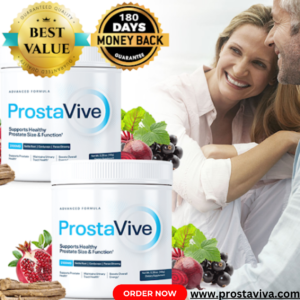Hollow Core Doors vs. Shaker Doors: A Comprehensive Guide
When choosing interior doors for your home, two popular options often come up: hollow core doors and Shaker doors. Both have distinct characteristics,...

When choosing interior doors for your home, two popular options often come up: hollow core doors and Shaker doors. Both have distinct characteristics, advantages, and drawbacks, making them suitable for different applications.
In this blog post, we’ll explore:
- What hollow core and Shaker doors are
- Their key differences in construction, durability, and aesthetics
- Pros and cons of each type
- Best use cases for hollow core and Shaker doors
- Factors to consider when choosing between them
By the end, you’ll have a clear understanding of which door type best fits your needs.
1. What Are Hollow Core Doors?
Hollow core doors are lightweight interior doors made with a thin veneer over a honeycomb or grid-like cardboard core. They are one of the most common and affordable types of interior doors.
Construction:
- Frame: Made of solid wood or composite material around the edges for stability.
- Core: Hollow interior filled with a honeycomb cardboard or fiberboard structure.
- Surface: Covered with a thin veneer (often wood, laminate, or MDF).
Pros of Hollow Core Doors:
✅ Affordable – One of the cheapest door options.
✅ Lightweight – Easy to install and handle.
✅ Good for basic interiors – Suitable for closets, pantries, and low-traffic areas.
✅ Easy to customize – Can be painted or laminated to match décor.
Cons of Hollow Core Doors:
❌ Less durable – Prone to dents and damage.
❌ Poor sound insulation – The hollow core doesn’t block noise well.
❌ Not suitable for heavy use – Weak against slamming or high traffic.
Best Uses for Hollow Core Doors:
- Closet doors
- Pantry doors
- Laundry rooms
- Temporary or rental properties
2. What Are Shaker Doors?
Shaker doors are a style of door inspired by the Shaker furniture movement, known for their simple, clean lines and recessed panel design. They can be made from solid wood or engineered materials like MDF.
Construction:
- Frame & Panel: Features a five-piece construction with a flat center panel surrounded by a sturdy frame.
- Material Options:
- Solid wood (e.g., oak, maple, pine) – Most durable and premium.
- MDF (Medium-Density Fiberboard) – Affordable, smooth finish, but less durable than solid wood.
- Plywood core with veneer – Mid-range option with good stability.
Pros of Shaker Doors:
✅ Timeless design – Fits modern, traditional, and farmhouse styles.
✅ Durable – Especially solid wood versions.
✅ Better sound insulation – Solid core options block noise better.
✅ High-end look – Elevates home aesthetics.
Cons of Shaker Doors:
❌ More expensive – Solid wood versions cost significantly more than hollow core.
❌ Heavier – Requires sturdy hinges and proper installation.
❌ Limited hollow core options – Most Shaker doors are solid or semi-solid.
Best Uses for Shaker Doors:
- Bedroom doors
- Bathroom doors
- Main living areas
- High-end renovations
3. Key Differences Between Hollow Core and Shaker Doors
| Feature | Hollow Core Doors | Shaker Doors |
|---|---|---|
| Core Material | Cardboard honeycomb | Solid wood, MDF, or plywood |
| Weight | Lightweight | Heavy (if solid wood) |
| Durability | Low | High |
| Sound Insulation | Poor | Good (especially solid core) |
| Cost | Very affordable | More expensive |
| Aesthetic Appeal | Basic, flat panels | Classic, recessed panel design |
| Best For | Low-traffic areas, closets | High-traffic areas, main rooms |
4. Which One Should You Choose?
Choose Hollow Core Doors If:
- You’re on a tight budget.
- You need lightweight doors for closets or pantries.
- You’re renting or need temporary solutions.
Choose Shaker Doors If:
- You want a stylish, timeless look.
- You need durability for high-traffic areas.
- You prioritize sound insulation.
5. Factors to Consider Before Buying
- Budget – Hollow core doors are cheaper, but Shaker doors offer better longevity.
- Durability Needs – Solid wood Shaker doors last longer than hollow core.
- Soundproofing – Hollow core doors are poor at blocking noise.
- Aesthetic Preferences – Shaker doors offer a more premium look.
- Installation – Hollow core doors are easier to install due to their lightweight nature.
6. Conclusion
Both hollow core doors and Shaker doors have their place in home design. Hollow core doors are budget-friendly and practical for low-traffic areas, while Shaker doors bring elegance and durability to main living spaces.
If you’re renovating or building a home, consider:
- Where the door will be used
- How much you’re willing to spend
- Whether you prioritize style or functionality
By weighing these factors, you can make the best choice for your home’s needs.
Would you prefer affordability or long-term quality? Let us know in the comments!
Final Thoughts
Doors play a crucial role in both functionality and aesthetics. Whether you opt for hollow core or Shaker doors, ensure they align with your home’s style, budget, and usage requirements.
For more home improvement tips, follow our blog! 🚪✨







